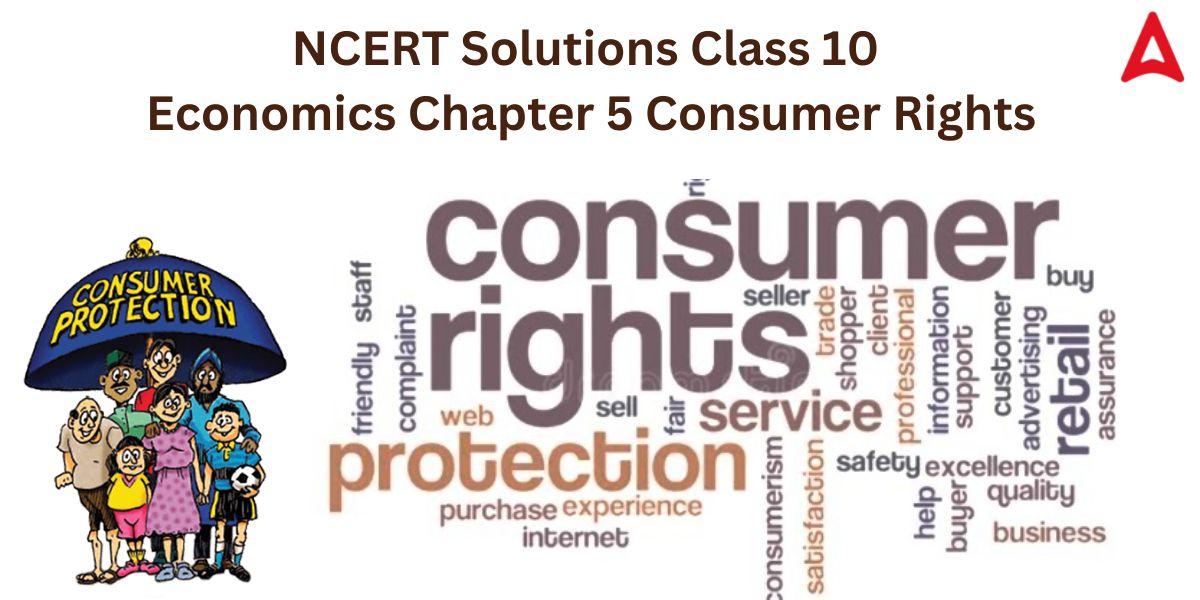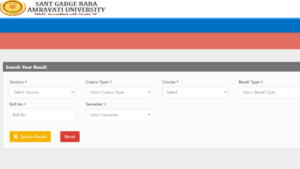NCERT Solutions Class 10 SST Economics Chapter 5 Consumer Rights Notes
NCERT Solutions Class 10 SST Economics Chapter 5 Consumer Rights notes are given in this article. NCERT Solutions Class 10 is the best resource for obtaining a good score in the class 10 board Examination. Here are Adda247 Expert faculty team prepared NCERT Solutions Class 10 SST Economics Chapter 5 Consumer Rights exercises of that chapter for a better grasp of the topics. These NCERT Solutions answer all questions in an easy and simple manner. These solutions will help you understand the concepts covered in the chapter completely. By writing these answers in the exam students will undoubtedly be able to achieve high scores. Keep learning with Adda247.
NCERT Solutions Class 10 SST Economics Chapter 5 Consumer Rights Pdf
NCERT Solutions Class 10 SST Economics Chapter 5 Consumer Rights are given in pdf format so students can easily download it for future use. Click here to download NCERT Solutions Class 10 SST Economics Chapter 5 Consumer Rights
NCERT Solutions Class 10 SST Economics Chapter 5 Consumer Rights Summary
Class 10 SST Economics Chapter 5 Consumer Rights explains the consumer rights that the government has given the nation’s citizens and how they can speak out against any unethical business practices. The chapter covers the need for laws and regulations in the marketplace, Additionally mentioned are the growing consumer movement in the nation and unethical business practices. various consumer rights consist of:
- Right to Information
- Right to seek redressal
- Right to Choose
- Right to Represent
- Right to Safety
- Right to Consumer Education
NCERT Solutions Class 10 SST Economics Chapter 5 Consumer Rights Questions with Answers
- Why are rules and regulations required in the marketplace? Illustrate with a few examples.
Answer. Rules and regulations are needed in the marketplace for the welfare of the customer. Sellers may mislead particular customers, and in the event that a customer complains about a shopkeeper, the customer is made responsible. Shopkeepers and traders take advantage of customers in a variety of ways, including offering goods that are contaminated and defective, less weight or measurement, or a higher price
Once the goods are sold, the sellers often have no responsibility for them. Therefore, laws and regulations are needed in the marketplace to safeguard consumers from such situations.
For instance, a grocery store owner may sell expired goods and then accuse the consumer of failing to verify the expiration date before making the purchase. Therefore, laws and regulations are necessary to protect consumers’ rights and interests in the marketplace.
- What factors gave birth to the consumer movement in India? Trace its evolution.
Answer:The consumer movement in India was sparked by a variety of factors. With the need to protect and promote consumer interests against unfair and unethical business practises, it began as a “social force.” The following are the driving forces behind the consumer movement in India:
- Lack of a legislative framework to safeguard consumers against commercial exploitation
- Extreme scarcity of food
- Contraband marketing
- Misbranding of food and cooking oil
Extreme food shortages, food adulteration, stockpiling, and black marketing in the 1960s prompted the consumer movement to organize. Consumer organizations spent the majority of their time until the 1970s organizing exhibitions and publishing publications. India’s government passed the Consumer Protection Act, or COPRA, in 1986. The Indian consumer movement took a big stride forward with this. Currently, the nation is home to more than 700 consumer activist groups that fight to safeguard the interests of consumers.
- Explain the need for consumer consciousness by giving two examples.
Answer: Customer consciousness is the awareness of one’s rights as a consumer when buying or selling something in the market so they are not taken advantage of or tricked.
- For example, before making a purchase from a store, a customer must check the product’s expiration and manufacturing dates. A complaint must be filed against the vendor if any expired goods are discovered in the store.
- The requirement that customers always ask for a computerized bill or physical bill for the things they purchase is another illustration of how consumer consciousness has evolved. This is due to the fact that if a consumer receives the incorrect product, the consumer forum will seek a bill that serves as evidence that the shopkeeper provided the incorrect product.
- Mention a few factors which cause the exploitation of consumers.
Answer: The following factors led to consumer exploitation:
- Lack of consumer awareness
- The lack of awareness is the most significant factor. When purchasing goods, people rarely request proper receipts or look at the expiration or many-manufacturing dates. If there is any damage to the product, they cannot prove it.
- Inadequate understanding of consumer rights
- Inadequate enforcement of laws and regulations
- Due to the small size of each individual purchase, consumers ignore small losses.
- What is the rationale behind the enactment of the Consumer Protection Act 1986?
Answer. The Consumer Protection Act of 1986 (COPRA)was created to protect the interests of consumers because there are no legal requirements for submitting a complaint.
For legal aid, a customer does not need to hire a professional or attorney. He is able to represent himself in a consumer court. A simple paper complaint can be submitted to the consumer court along with supporting documentation like a guarantee or warranty card, a cash memo, etc. This Act establishes a department with sole responsibility for handling consumer complaints and a separate department for the federal and state governments.
- Describe some of your duties as consumers if you visit a shopping complex in your locality.
Answer: Following are some of our responsibilities as consumers when you visit a shopping complex in your locality
- Every time ask for an accurate bill for your purchased items.
- Pay no more than the MRP or Maximum Retail Price. Just Paying the maximum retail price (MRP) that is printed on the product.
- Before purchasing any item from the market, check the expiration and manufacturing dates.
- Report any violation of a rule or regulation outlined in the marketplace laws right away to the consumer courts.
- Ensure the product is not tampered with or defective by carefully inspecting it.
- When making purchases, look for the usual quality certification labels like ISI, Agmark, FPO, Eco-mark, and Hallmark.
- Suppose you buy a bottle of honey and a biscuit packet. Which logo or mark you will have to look for and why?
Answer. Before purchasing food goods, we should seek for the Agmark or ISI sign because these marks indicate that the item was produced by a business with official certification, which guarantees the quality of the final product.
- What legal measures were taken by the government to empower consumers in India?
Answer: The Indian government has taken a number of legal actions to give consumers more control. These include the following:
1. The Consumer Protection Act (COPRA), passed in 1986, comes first and foremost. This was a significant breakthrough for India’s consumer movement, which offers quick and simple recompense for customer complaints against unfair business practices and exploitation.
2. The Right to Information Act, which was passed in October 2005, was created to inform the public about how government agencies operate.
3. A consumer court was established so that people could bring complaints with any disparity with the consumer.
- Mention some of the rights of consumers and write a few sentences on each.
Answer: A few of the consumer’s rights are as follows:
- Right to Choose: Anyone who gets a service in any capacity, regardless of age, gender, or the type of service, has the right to decide whether to keep receiving it. No customer’s right to select the goods they want to purchase can be refused.
- Right to information: Customers can now obtain information about how government offices function under the RTI Act of 2005. Its principal goal is to inform all of the common citizen about how the government works.
- Right to Seek Redressal: Consumers have the right to seek redressal against exploitation and unfair business practices. Depending on the degree of the damage, a customer has the right to compensation if any damage is caused to them. This means that whether they are the subject of monopolistic tactics (unfair trade) or exploitation, consumers have the right to seek redressal.
- Right to Represent: As a result of this law, consumers have the right to appear in front of a consumer court and argue their unfair claims legally.
- By what means can the consumers express their solidarity?
Answer. In order to protest unfair trade practices, consumers can organize themselves into small groups and organize demonstrations or protests. These organizations offer advice on how people can defend their rights and go before a consumer court. These organizations receive funding from the government to raise awareness among the general population. To safeguard all consumers’ interests, there should be active consumer participation.
- Critically examine the progress of the consumer movement in India.
Answer. Since the consumer movement beginnings in India, it has undergone significant development. Consumer awareness in the nation has drastically changed. Before the Consumer Protection Act (COPRA) was passed in 1986, the consumer movement was not very strong, but it has since gained a great deal of power. The creation of consumer organizations and courts was an important development. The country’s Consumer Protection Act (COPRA), which was approved by the government, has helped the populace fight for their rights against any unethical business practices or product sellers in consumer courts and made them more aware of their rights.
- Match the following.
| (i) Availing details of ingredients of a product | (a) Right to safety |
| (ii) Agmark | (b) Dealing with consumer cases |
| (iii) Accident due to faulty engine in a scooter | (c) Certification of edible oil and cereals |
| (iv) District Consumer Court | (d) Agency that develop standards for goods and services |
| (v) Consumers International | (e) Right to information |
| (vi) Bureau of Indian Standards | (f) Global level institution of consumer welfare organisations |
Answer:
| (i) Availing details of ingredients of a product | (e) Right to information |
| (ii) Agmark | (c) Certification of edible oil and cereals |
| (iii) Accident due to faulty engine in a scooter | (a) Right to safety |
| (iv) District Consumer Court | (b) Dealing with consumer cases |
| (v) Consumers International | (f) Global-level institution of consumer welfare organisations |
| (vi) Bureau of Indian Standards | (d) The agency that develops standards for goods and services |
- Say True or False.
(i) COPRA applies only to goods.
Answer: False
(ii) India is one of the many countries in the world which has exclusive courts for consumer redressal.
Answer: True
(iii) When a consumer feels that he has been exploited, he must file a case in the District Consumer Court.
Answer: True
(iv) It is worthwhile to move to consumer courts only if the damages incurred are of high value.
Answer: True
(v) Hallmark is the certification maintained for standardisation of jewellery.
Answer: True
(vi) The consumer redressal process is very simple and quick.
Answer: False
(vii) A consumer has the right to get compensation depending on the degree of the damage.
Answer: True
Found this article helpful?
Let’s connect via chat or call our senior expert counselor at +91-9625869989 to learn more about the different streams and options available. We would love it if we could add some of your insights. If you have a definite goal of scoring the highest marks, then you can resolve your doubts via our app (https://play.google.com/store/apps/details?id=com.adda247.app&referrer=invite_code=8973023) and youtube class assistance (https://www.youtube.com/c/Adda247School)
NCERT Solutions Class 10 SST Economics Chapter 5 Consumer Rights-FAQs
Q.How do I acquire the NCERT Solutions for Class 10 SST Economics Chapter 5 Consumer Rights in an online PDF format?
Ans. you can download the NCERT Solutions for Class 10 SST Economics Chapter 5 Consumer Rights PDF from the link provided in the article.
Q.How can using NCERT Solutions for Adda247’s Economics Chapter 5 for Class 10 SST benefit you?
Ans. The following are some benefits of using Adda247’s NCERT Solutions for Class 10 SST Economics:
- Students are given both the NCERT solution and a video explanation.
- A PDF is also provided, which can be downloaded and saved for future use









 BTEUP Result 2025 Out at bteup.ac.in, Do...
BTEUP Result 2025 Out at bteup.ac.in, Do...
 SGBAU Result 2025 Out, Check Summer Seme...
SGBAU Result 2025 Out, Check Summer Seme...
 How To Prepare for CUET Accountancy Exam...
How To Prepare for CUET Accountancy Exam...









